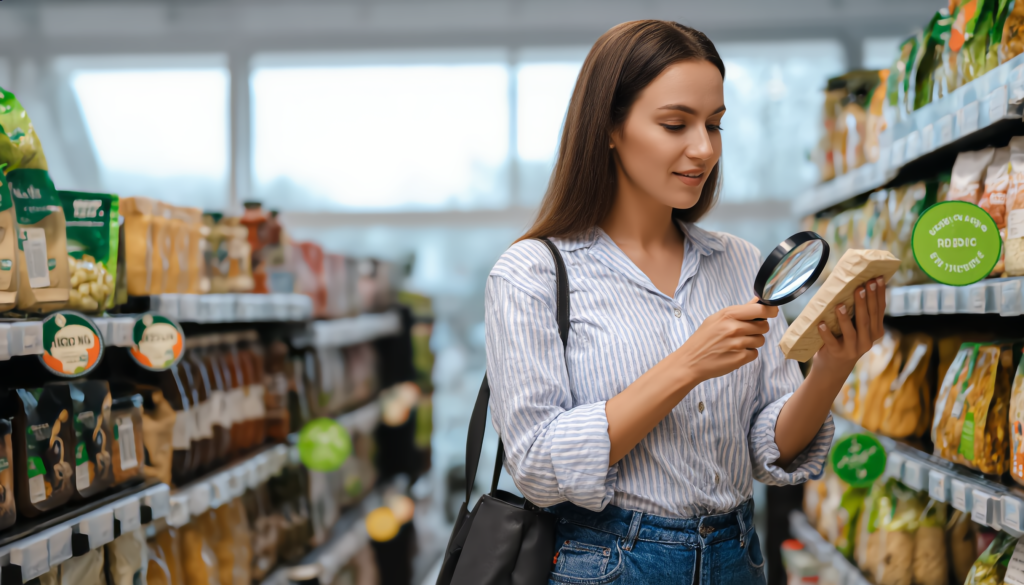Let’s be real: shopping for organic products can feel like navigating a minefield. You want the good stuff—food that’s grown without synthetic pesticides, GMOs, or sketchy additives—but how do you know if that “certified organic” label is the real deal or just a marketing gimmick? With fraud and misleading claims on the rise, especially in large supermarkets and with imported goods, it’s more important than ever to know how to spot fake organic labels at the grocery store.
In this guide, we’ll walk you through the telltale signs of genuine organic certification, the red flags to watch for, and insider tips for making sure your cart is filled with authentic organic goodness—not imposters.
Why Does Organic Labeling Matter?
Before we dive into the nitty-gritty, let’s talk about why this matters. Organic certification is supposed to guarantee that a product meets strict standards for how it’s grown, processed, and handled. This means no synthetic pesticides, no GMOs, and a commitment to sustainable farming practices. But when labels are fake or misleading, you’re not getting what you pay for—and your health and the environment could be at risk.
The Rise of Fake Organic Labels
The organic food industry has exploded in popularity, and with that growth comes opportunity—for both honest farmers and unscrupulous marketers. Large-scale commercial organics, especially those imported from overseas, are particularly vulnerable to fraud. “Group certification” schemes can allow big agribusinesses to bypass proper inspections, and some companies have been caught slapping fake labels on products that don’t meet organic standards.
In one notorious case, a Miami-based company marketed personal care products as “certified organic” when they contained non-organic ingredients and had never been certified by the USDA. They even went so far as to forge certification documents and mislead retailers and influencers. Stories like this are why it’s so important to be a savvy shopper.
How to Spot Genuine Organic Certification
So, how can you tell if an organic label is legit? Here’s what to look for:
1. Official Certification Logos
Genuine organic products will display a recognized certification logo, such as:
- USDA Organic (United States)
- EU Organic Leaf (European Union)
- India Organic or Jaivik Bharat (India)
- Australian Organic Bud (Australia)
- Soil Association (UK)
- ECOCERT (International)
These logos are regulated and can only be used by products that have passed rigorous inspections.
Red Flag: If a product claims to be organic but lacks an official logo, or if the logo looks off (misspelled, blurry, or unfamiliar), be suspicious.
2. Certification Number and Agency
Every certified organic product should list the name of the certifying agency and a certification number. This allows you to verify the product’s status with the certifier or through an official database.
Tip: Look for this information on the packaging or in the product description online. If it’s missing or unclear, that’s a warning sign.
3. Clear Ingredient List
Certified organic products must list their ingredients, and everything should be organic (or at least 95% organic, depending on the label). If you see numbers, chemical names, or synthetic additives, the product isn’t truly organic.
Red Flag: Vague terms like “natural,” “eco-friendly,” or “chemical-free” are not regulated and do not mean the product is certified organic.
4. Traceability and QR Codes
Many authentic organic brands now include QR codes or batch numbers on their packaging. Scanning the code should take you to detailed information about the product’s origin, certification, and journey from farm to table.
Tip: If there’s no way to trace the product’s origins, be cautious.
5. Price and Packaging
Genuine organic products often cost more due to the higher costs of organic farming and certification. If a product’s price seems too good to be true, it probably is.
Red Flag: Overly cheap “organic” products are a common sign of fraud.
6. Brand Transparency
Trustworthy brands are transparent about their sourcing, certification, and production methods. Look for brands that share detailed information about their farms, certifiers, and processes.
Tip: If a brand is vague or secretive about its practices, that’s a red flag.
7. Where You Shop Matters
Local, direct-from-farmer organics (like those at farmers markets or through CSAs) are generally more reliable than large-scale commercial organics sold in supermarkets. There’s virtually no fraud at the local level, according to industry experts1.
Tip: When possible, buy from local farmers or trusted independent retailers1.
Common Red Flags: How to Spot Fake Organic Labels
Here’s a quick cheat sheet for spotting fake organic labels at the grocery store:
- Missing or unclear certification logos
- Vague or unregulated terms (e.g., “natural,” “eco-friendly,” “chemical-free”)
- No certification number or agency listed
- No traceability or QR code
- Overly low prices
- Unverifiable certifiers or obscure logos
- Lack of transparency about sourcing or production
How to Verify Organic Certification
If you’re still unsure, here are some steps you can take to verify a product’s organic status:
1. Check the Certification Database
Most countries have an official database where you can verify organic certification. In the US, use the USDA Organic Integrity Database. In India, check the Indian Organic Integrity Database. These resources let you search by product, farm, or company name.
2. Contact the Certifier
If you have questions about a product’s certification, contact the certifying agency directly. They can confirm whether the product is legitimately certified.
3. Read Reviews and Do Your Research
Look for customer reviews and ratings, especially from verified buyers. Genuine feedback can help you spot fake products or misleading claims.
The Bigger Picture: Why Authentic Organic Matters
Choosing authentic organic products isn’t just about getting what you pay for—it’s about supporting sustainable farming, protecting the environment, and safeguarding your health. Fake organic labels undermine trust in the entire industry and can lead to the use of harmful pesticides, GMOs, and synthetic additives in products marketed as “organic”.
By learning how to spot fake organic labels, you’re not just protecting yourself—you’re helping to hold the industry accountable and supporting farmers who are doing things the right way.
Tips for Shopping Organic with Confidence
To wrap things up, here are some practical tips for ensuring your grocery cart is filled with authentic organic products:
- Always look for official certification logos
- Verify the certification number and agency
- Read the ingredient list carefully
- Check for traceability (QR codes, batch numbers)
- Be wary of overly low prices
- Buy from local farmers or trusted independent retailers when possible
- Use official databases to verify certification
- Choose transparent brands that share their sourcing and certification details
- Read customer reviews and do your research
Final Thoughts: Be a Savvy Organic Shopper
The next time you’re at the grocery store, don’t just take that “certified organic” label at face value. Look for the official logos, check the certification details, and do a little detective work to make sure you’re getting the real deal. With a bit of knowledge and a keen eye, you can spot fake organic labels and shop with confidence.
Remember: authentic organic certification is about more than just a label—it’s a promise of quality, sustainability, and transparency. By choosing wisely, you’re supporting a healthier food system for yourself and the planet.








